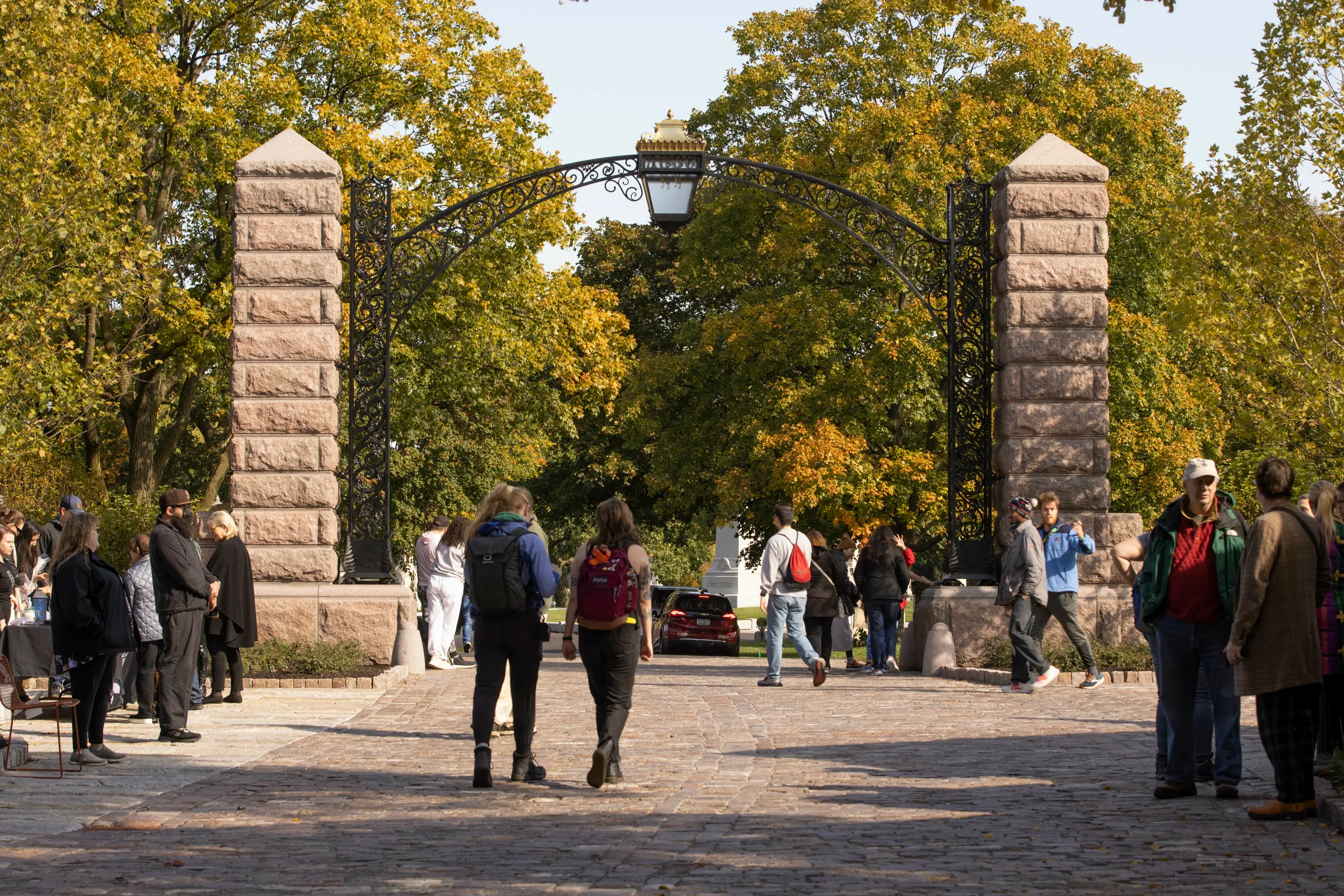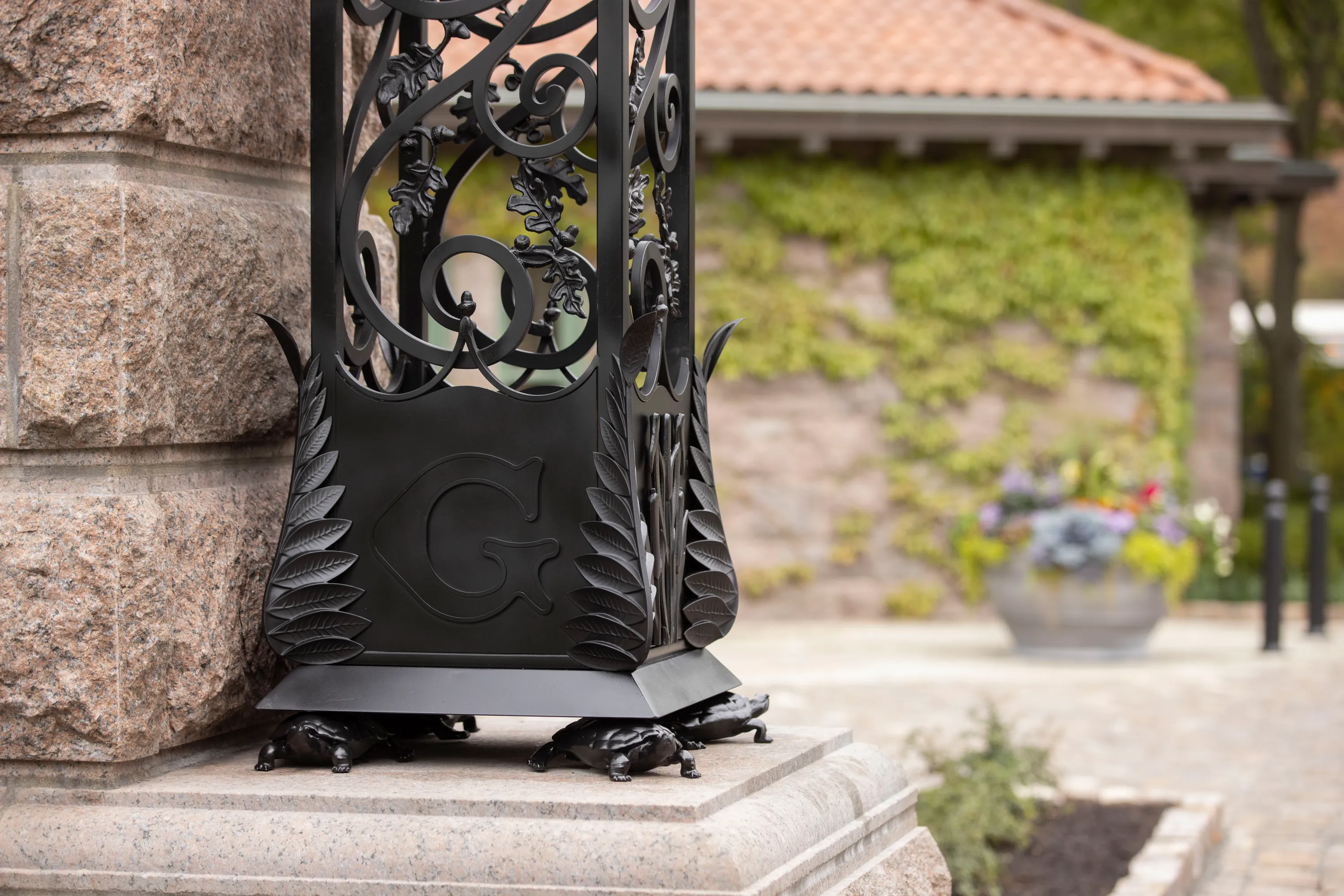With Simonds as his North Star, Hoerr conceived of a design that transitions visitors from the urban to the natural.
The plaza is laid with street pavers salvaged from Ashland Avenue as well as slabs of reclaimed granite curbstone from Vermont. The rose-colored granite framing the arch is the same stone that was used in Graceland’s existing historic structures — though the original quarry in Wisconsin is now closed and Hoerr had to source the rock from Canada.
Challenges included an absolute hard stop in terms of the plaza’s footprint: Not a single grave was disturbed, much less moved, in the renovation. And Hoerr also had to allow space for a hearse to turn around because, yes, contrary to common assumptions, burials still occur at Graceland (roughly 100 per year, according to Allen).
Softening the hardscape are several groupings of plants, some of them more formally designed than others. Natives share space with non-natives in the forecourt, but on the backside of the arch natives dominate, in keeping with Simonds’ incorporation of natives in his design, which was unusual for the time.
Though the plantings are new, Hoerr can already envision how they will grow together — the yews and the witch-hazel, the bottlebrush buckeye and the hawthorn —and the ways their textures and colors will play off each other.
The London planetrees that flank the archway, for example, have a bark, he said, that glows white like the obelisks behind them, and their big coarse leaves contrast against the finer foliage of neighbors like the honey locust.
And the arch itself is loaded with decorative references to Chicago’s natural environment, from bur oak leaves to cattails that pay homage to the land’s marshy origins to endangered red slider eastern turtles propping up on the bases. At each endpoint of the arch, keen observers will find wrought-iron owls, acting as guardians, Hoerr said.
“I think it will be cool for kids to come and have a scavenger hunt,” he said of the arch’s Easter eggs.









